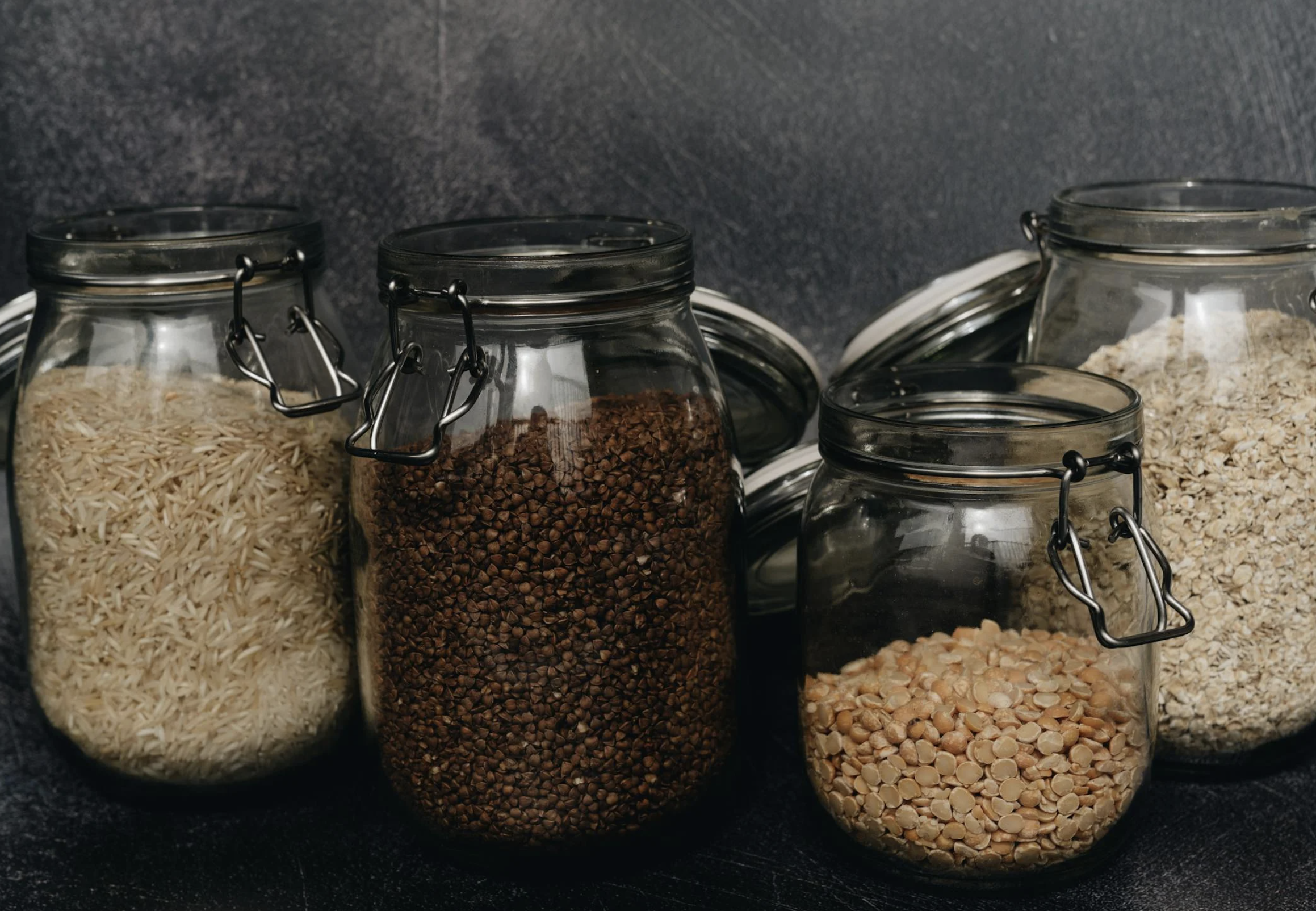Simple ways to shop, store and eat with less waste this winter
Winter may be drawing to a close, but we still have a few weeks of chilly days ahead of us. The colder months are the perfect time to rethink our grocery habits. Winter often brings bulkier meals, hearty produce, and more time indoors – making it ideal for adopting more mindful, zero-waste approaches in the kitchen. Whether you’re new to low-waste living or looking to fine-tune your habits, here are our favourite tips for shopping smart and using every last bite.
🛒 1. Buy in Bulk (The Smart Way)
Winter is the season for warm grains, stews, and slow-cooked comfort food – and buying dry goods in bulk is a fantastic way to cut both costs and packaging waste.
- Go for staples: Think lentils, brown rice, oats, pasta, flours, dried beans, and soup mixes.
- Bring your own containers: Use jars, cloth bags, or compostable paper bags to fill up at your local grocer.
- Avoid over-buying: Only stock what you can realistically use in 4-6 weeks to avoid spoilage, even for pantry goods.
Pro tip: Create a pantry inventory list and mark “low stock” items to reduce repeat buys and food waste.
🥦 2. Store Food Properly to Make It Last
Colder weather may slow spoilage, but that doesn’t mean your veggies and perishables don’t need TLC. Proper storage is key to reducing waste and getting the most from your shop.
- Leafy greens: Wrap in a clean tea towel and store in a sealed container or produce bag in the fridge to keep them crisp.
- Root vegetables: Store carrots, beetroot, and parsnips in a container with a little water or keep unwashed in a cool, dark place.
- Herbs: Treat like flowers – snip the stems and place in a glass of water in the fridge, loosely covered with a beeswax wrap.
Don’t forget to rotate food so the oldest items get used first – think FIFO: first in, first out.
🍲 3. Use Every Scrappy Bit
Winter is broth season, which makes it the perfect time to turn food scraps into something delicious instead of tossing them.
- Veggie scraps: Keep a freezer bag of onion skins, carrot peels, celery leaves, mushroom stems, and herb ends to make homemade veggie stock.
- Bones: If you’re cooking with meat, use bones to make nourishing bone broth – great for soups, risottos, and gravies.
- Citrus peels: Use zest in baking or cocktails; dry them for potpourri or natural cleaning vinegar.
- Stale bread: Transform into croutons, breadcrumbs, or bread pudding.
🌱 4. Compost What You Can’t Eat
Even the most conscious kitchen will produce some unavoidable waste – tea leaves, banana peels, or spoiled bits. But that doesn’t mean it has to go to landfill.
- Start a compost bin: Use a countertop compost caddy for scraps, and transfer regularly to a home compost bin or community collection point.
- Know your compostables: Coffee grounds, eggshells, veggie scraps, shredded paper, and natural fibres all break down beautifully.
See if you can partner with a local community garden.
♻️ 5. Bonus: Shop Local & Seasonal
Buying local and in-season produce not only supports your community and reduces transport emissions, but also means fresher food that lasts longer – and that’s a win for waste reduction.
Visit Wildwood and ask what’s best right now. (Tip: Winter standouts include brassicas like cauliflower and cabbage, citrus fruits, apples, root veggies, and leafy greens.)
Zero-waste isn’t about perfection – it’s about progress. The colder months invite us to slow down, cook more thoughtfully, and enjoy food that nourishes us and the planet. By shopping smarter, storing better, and using up what we have, we can make winter a season of sustainability and comfort.





0 Comments